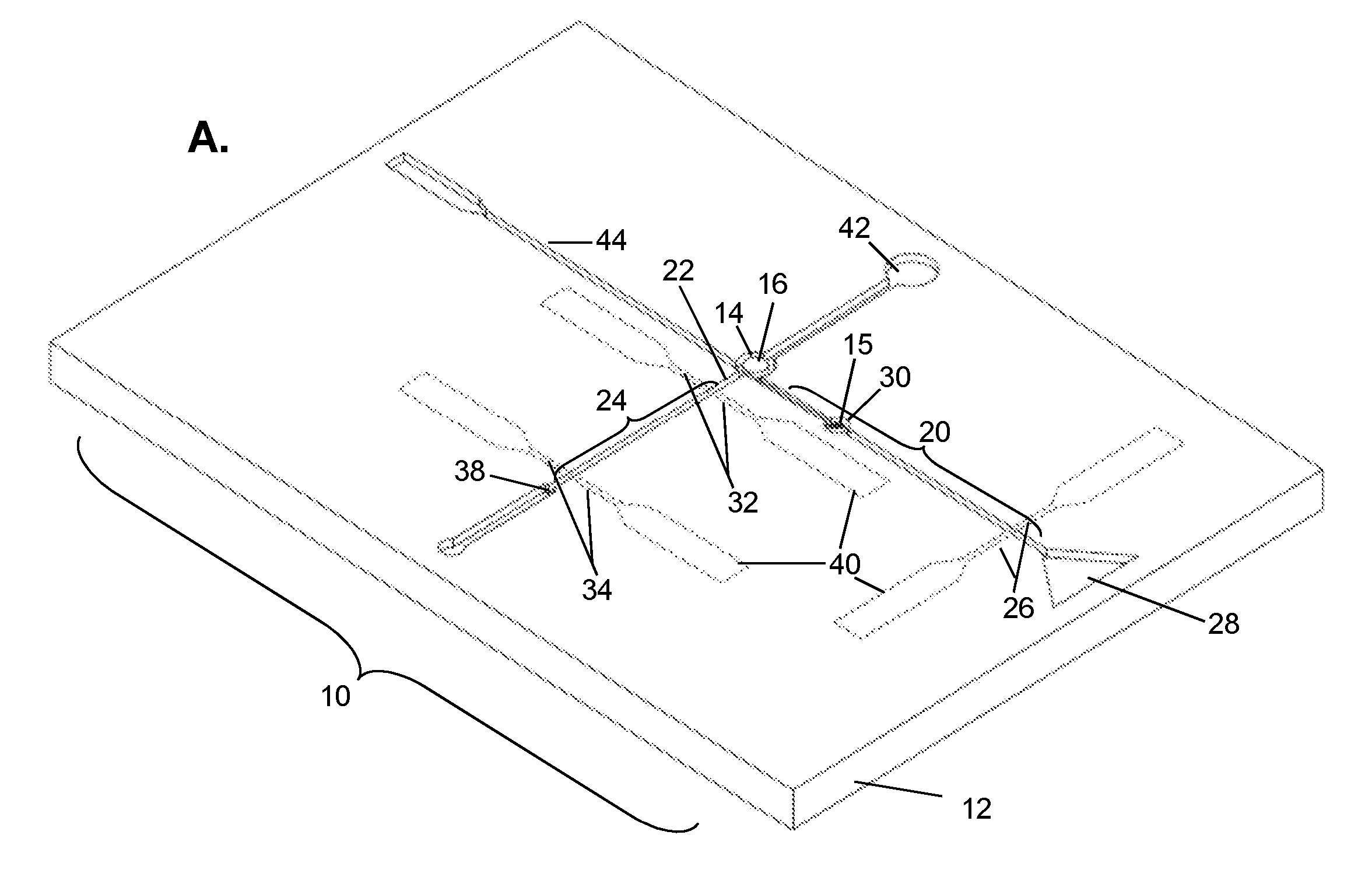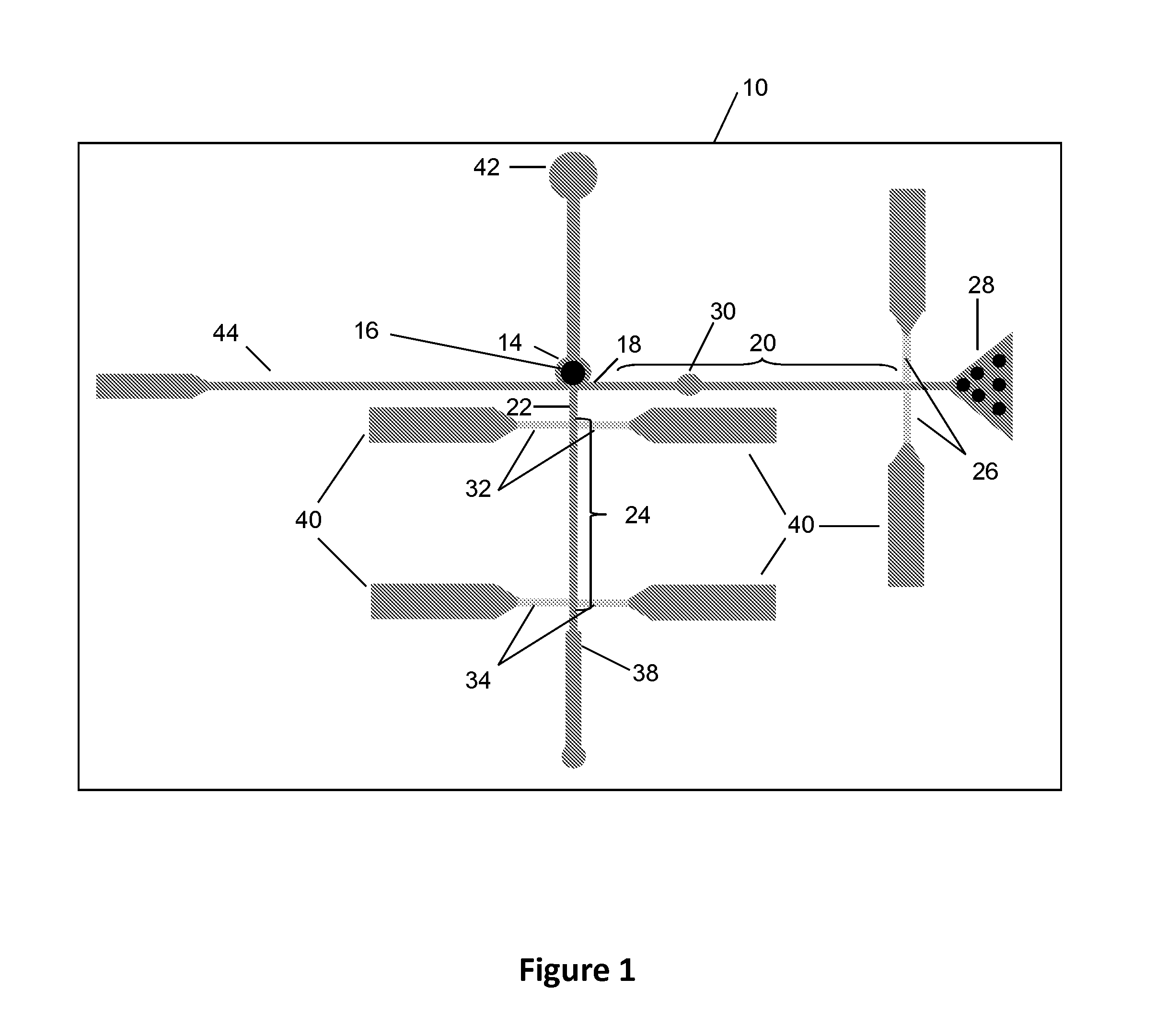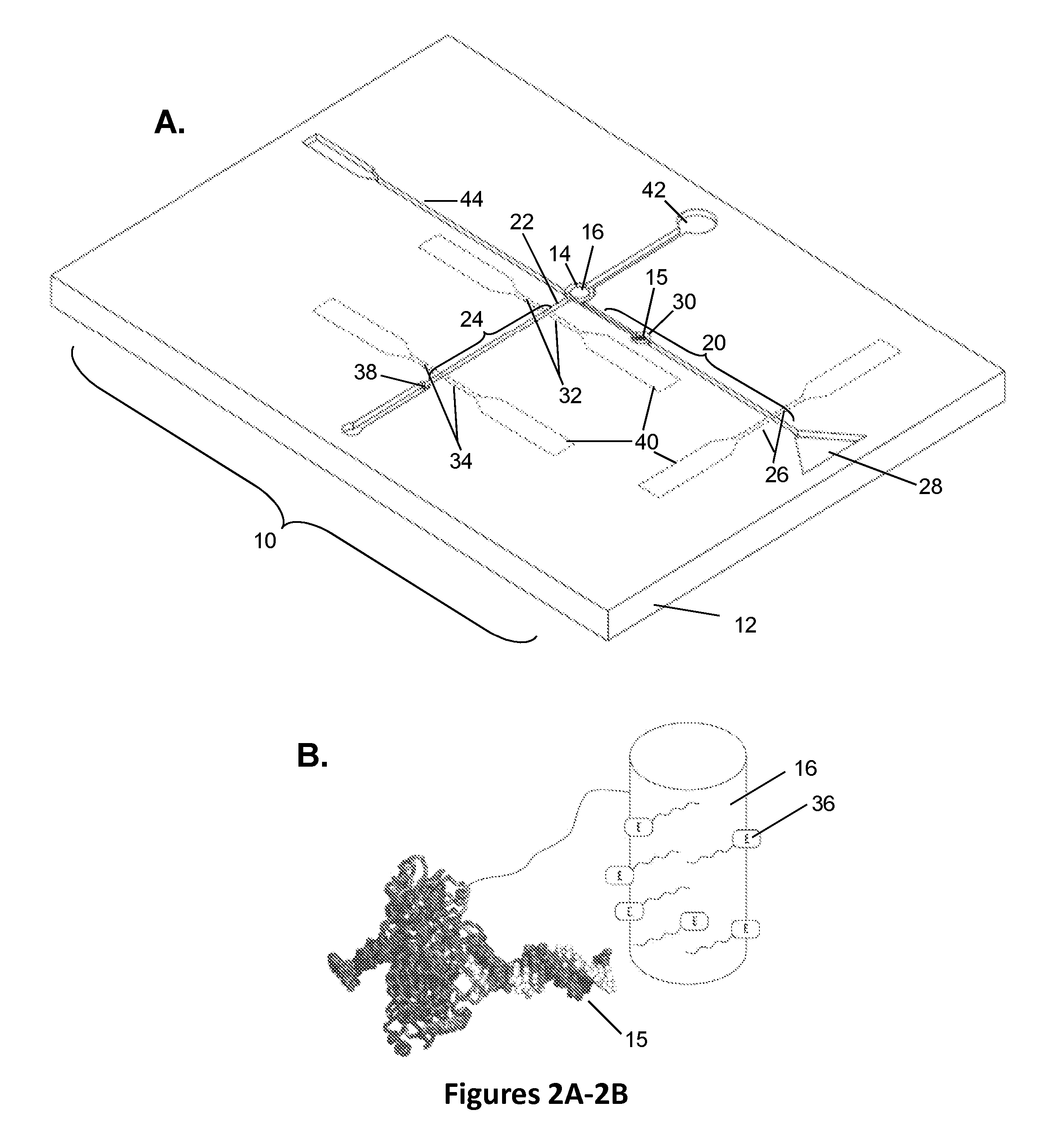Biomolecular processing platform and uses thereof
a biomolecular processing and platform technology, applied in the field of nucleic acid sequencing and protein/polypeptide identification, can solve the problems of inability to build a complement using exclusively dye-modified dntps, difficult implementation, and best treatment, and achieve low cost, high production rate, and reduce cost and labor. and time.
- Summary
- Abstract
- Description
- Claims
- Application Information
AI Technical Summary
Benefits of technology
Problems solved by technology
Method used
Image
Examples
example 1
Equilibrium Simulations and Adsorption Free Energy
[0245]The goal of the equilibrium simulations was to investigate the mechanism and the energetics of individual dNMPs adsorption and desorption in the absence of flow. For each dNMP several simulations were run with different wall configurations (see Table 8). Each simulation lasted for about 65 ns, while the total simulation time for all four dNMPs and all of the various wall configurations was about 966 ns. The interaction of individual dNMPs with the slit walls is best described by their free energy profiles across the nanoslit. The free energy difference relative to a reference state, ΔF, as a function of a reaction coordinate (potential of mean force or PMF) is related to the probability, Pr, of the dNMP being located at a given value of the reaction coordinate. Because the probability for a dNMP to be adsorbed or desorbed from a smooth surface was of interest, the reaction coordinate was taken as the distance, dw, of the dNMP c...
example 2
Adsorption and Desorption Dynamics
[0248]Relating the adsorption and desorption statistical and dynamical properties to other properties such as flight times is of great interest. The analysis of the simulation results indicate that while the dNMPs were adsorbed, the rings of the relatively hydrophobic nucleobases tended to be nearly flat on the surface, the hydrophilic phosphate groups pointed away from the surface, and the sugar also had some contact with the surface (see FIG. 34A). This hydrophobic adhesion of the nucleobases to a surface has been observed previously in simulations of transport of DNA strands through a silicon nitride nanopore (Aksimentiev et al., Biophys. J. 87: 2086-2097 (2004), which is hereby incorporated by reference in its entirety), and with a grapheme sheet in simulations of the transport of DNA strands through a grapheme nanopore (Wells et al., Nano Lett. 12: 4117-4123 (2012), which is hereby incorporated by reference in its entirety). FIG. 37 shows 50 ns...
example 3
Role of dNMP Interaction with Channel Walls on Various Equilibrium and Flow Characteristics
[0254]Table 8 shows various quantities calculated from the simulations. These show, among others, that: i) For each of the four dNMPs the fraction of time adsorbed for the non-equilibrium case is nearly the same as in the equilibrium case. This is an indication that the adsorption / desorption behavior of the dNMPs is not significantly altered by the relatively high flow velocities used in these simulations. The flow velocities used are still small compared to the largest instantaneous thermal velocities of the molecules, which are on the order of hundreds of meters per second. ii) The times-of-flight of dCMP and dTMP are well separated even over only 50 nm travel distance, meaning that an uncharged, hydrophobic surface, such as that used in these simulations, is sufficient to distinguish these two dNMPs. This can be attributed to differences in hydrophobicity of the nucleobases: GJ. Mol. Biol. ...
PUM
| Property | Measurement | Unit |
|---|---|---|
| Nanoscale particle size | aaaaa | aaaaa |
| Nanoscale particle size | aaaaa | aaaaa |
| Nanoscale particle size | aaaaa | aaaaa |
Abstract
Description
Claims
Application Information
 Login to View More
Login to View More - R&D
- Intellectual Property
- Life Sciences
- Materials
- Tech Scout
- Unparalleled Data Quality
- Higher Quality Content
- 60% Fewer Hallucinations
Browse by: Latest US Patents, China's latest patents, Technical Efficacy Thesaurus, Application Domain, Technology Topic, Popular Technical Reports.
© 2025 PatSnap. All rights reserved.Legal|Privacy policy|Modern Slavery Act Transparency Statement|Sitemap|About US| Contact US: help@patsnap.com



